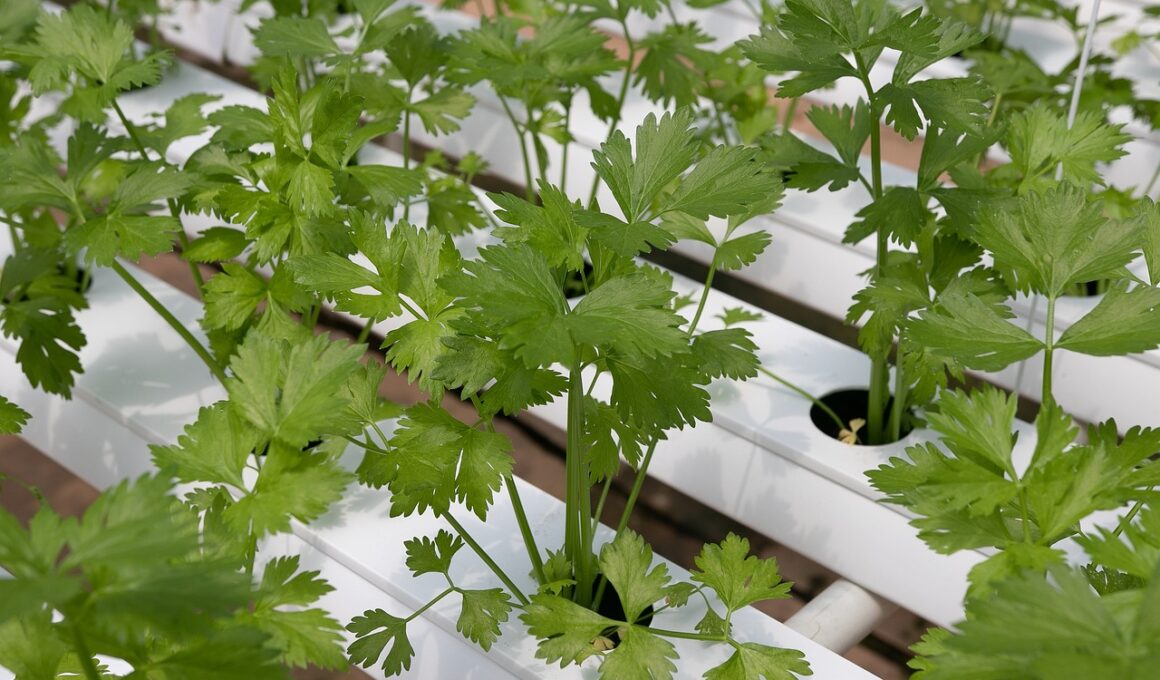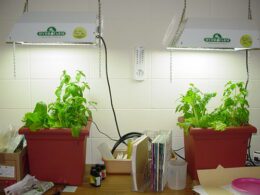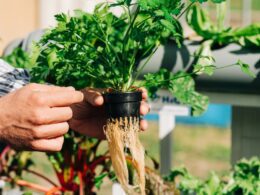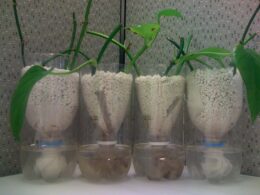Are your hydroponic tomatoes not growing as big as you expected? Don’t worry, you’re not alone. Many hydroponic gardeners face the same problem. However, this doesn’t mean that you have to settle for small, unsatisfactory tomatoes.
With a little bit of understanding and effort, you can improve the growth and yield of your hydroponic tomatoes.
Firstly, it’s important to understand that hydroponics is a complex system that requires proper maintenance and care. One of the most critical factors in growing healthy and robust tomatoes is providing them with the right nutrition. Without proper nutrition, your plants may struggle to grow, develop, and produce fruit.
In this article, we’ll explore the reasons why your hydroponic tomatoes may be small and what you can do to fix this issue. So, sit back, relax, and let’s dive into the world of hydroponic gardening.
Understand the Importance of Proper Nutrition in Hydroponics
Proper nutrition is crucial for healthy hydroponic plants to reach their full potential. Nutrient deficiencies can cause stunted growth, discoloration, and reduced yield.
In hydroponics, plants rely on a nutrient solution to provide them with all the necessary elements for growth. If the solution lacks any of these elements, it can lead to nutrient deficiencies that can negatively impact the plant’s growth and development.
One factor that affects the nutrient availability in hydroponics is pH balance. The pH level of the nutrient solution should be maintained within a specific range to ensure optimal nutrient uptake. If the pH level is too high or too low, the nutrients in the solution become less available to the plants, leading to nutrient deficiencies.
Therefore, it’s essential to regularly monitor and adjust the pH level of the nutrient solution to prevent any nutrient imbalances. In conclusion, proper nutrition is essential for healthy hydroponic plants, and nutrient deficiencies and pH imbalances can hinder their growth and development.
By maintaining a balanced nutrient solution and pH level, you can provide your plants with the necessary elements for growth and ensure they reach their full potential. So, pay close attention to your hydroponic system’s nutrient solution and pH level to ensure that your plants thrive and provide you with a bountiful harvest.
Choose the Right Hydroponic Nutrient Solution
You’ll be amazed at the difference in size and quality of your tomatoes when you choose the right nutrient solution for your hydroponic system. Nutrient ratios and pH levels are essential factors that contribute to the optimal growth of your plants.
It’s important to ensure that your nutrient solution has the right balance of essential nutrients such as nitrogen, phosphorus, and potassium. Depending on the type of plant, the nutrient ratio may vary, so it’s essential to do your research beforehand to ensure that your tomatoes receive the right nutrients.
Organic vs synthetic nutrients: pros and cons are important to consider when choosing your nutrient solution. Organic nutrients are derived from natural sources and are considered more sustainable and environmentally friendly. However, they can be more challenging to use and may not provide as consistent results as synthetic nutrients. Synthetic nutrients are created through chemical processes and are more consistent in their nutrient ratios. However, they may not be as sustainable and environmentally friendly as organic nutrients.
To optimize growth, it’s crucial to maintain the pH levels of your nutrient solution. The ideal pH range for hydroponic tomatoes is between 5.5 and 6.5. If the pH levels are too high or too low, your plants may not be able to absorb the nutrients efficiently, leading to stunted growth.
Regularly monitoring and adjusting the pH levels of your nutrient solution is essential to ensure that your tomatoes receive the optimal amount of nutrients. By choosing the right nutrient solution and maintaining the ideal pH levels, you can ensure that your hydroponic tomatoes grow to their full potential.
Provide Adequate Lighting and Temperature
Ensuring adequate lighting and temperature is crucial for optimal growth and yield in your hydroponic tomato plants. Here are some tips to help you achieve the best results:
-
Adjust water pH: Tomatoes prefer a slightly acidic environment with a pH between 5.5 and 6.5. Test your water regularly and adjust the pH as needed using pH up or pH down solutions.
-
Provide enough light: Tomatoes need at least 12-14 hours of light per day to grow properly. Use high-quality grow lights if you don’t have access to natural sunlight.
-
Control humidity: High humidity can lead to fungal diseases and slow down growth. Aim for a humidity level between 50-70% in your grow room.
-
Monitor temperature: Tomatoes thrive in temperatures between 70-80°F (21-27°C). Keep your grow room at a consistent temperature using heaters, air conditioners, or fans.
-
Consider the plant’s stage of growth: Tomatoes have different lighting and temperature requirements during the vegetative and flowering stages. Adjust your setup accordingly to ensure optimal growth.
By following these tips, you can provide your hydroponic tomato plants with the right environment for optimal growth. Remember to monitor your plants regularly and make adjustments as needed to ensure they’re healthy and thriving. Adjusting the water pH and controlling humidity are crucial steps in providing the right environment for your plants. Don’t forget to consider the plant’s stage of growth and adjust your setup accordingly. With the right lighting and temperature, you can expect healthy, large tomatoes from your hydroponic garden.
Does the Lack of Size in Hydroponic Tomatoes Affect their Taste?
Hydroponic tomatoes’ lack of taste has been a topic of debate among experts. Some argue that their smaller size affects flavor, while others claim that nutrient-controlled environments enhance taste. Research is ongoing to determine the impact of size on taste perception. However, despite concerns, hydroponic tomatoes are favored for their year-round availability and sustainable cultivation methods.
Monitor Plant Growth and Adjust as Necessary
Keep an eye on your plants as they grow and make necessary adjustments to ensure they continue to thrive. Measuring progress is an important part of this process. One way to do this is by keeping a record of how tall your plants are each week. This will help you identify any growth patterns or issues that may arise. If your plants are not growing as expected, you can adjust the environment or nutrients accordingly.
Another factor to consider when optimizing yield is balancing pH levels and adjusting nutrients. Hydroponic systems rely on a precise balance of nutrients to keep plants healthy. If the pH level is too high or too low, it can affect nutrient uptake, leading to stunted growth. You can measure pH levels regularly and adjust accordingly. Similarly, you can adjust nutrient levels as needed to ensure your plants are getting the right balance of macro and micronutrients.
Monitoring your plants and making necessary adjustments is crucial for achieving optimal growth and yield. By keeping track of your plants’ progress and adjusting pH levels and nutrients as needed, you can ensure that your hydroponic tomatoes grow to their full potential. Remember to keep a record of your measurements and adjustments, as this can help you identify patterns and make informed decisions in the future. Happy growing!
Troubleshoot Common Issues
If issues arise, troubleshoot common problems to ensure your hydroponic tomato plants continue to thrive. One common issue that may cause small tomatoes is a pH imbalance. The optimal pH level for tomato plants is between 5.5 and 6.5. If the pH level is too high or too low, it can affect the plant’s ability to absorb nutrients, which can lead to stunted growth.
To fix this issue, test the pH level of your nutrient solution using a pH meter or test kit. If the pH level is off, adjust it by adding pH up or pH down solutions until it reaches the optimal range.
Another issue that may cause small tomatoes is poor water quality. The water used in hydroponic systems should be free of contaminants such as chlorine and heavy metals. These contaminants can harm the plant’s roots and affect its ability to absorb nutrients.
To ensure the water quality is up to par, use a water filter or allow tap water to sit for 24 hours to allow the chlorine to dissipate. Additionally, monitor the water level in the reservoir to ensure it doesn’t become too low, which can also affect plant growth.
In summary, troubleshooting common issues such as pH imbalance and poor water quality can help ensure your hydroponic tomato plants produce healthy and robust fruits. Regularly monitoring the pH level and water quality, and making adjustments as necessary, can prevent stunted growth and other issues that may affect the plant’s overall health. By taking these proactive steps, you can increase your chances of having a successful hydroponic tomato harvest.
Frequently Asked Questions
Can hydroponic tomatoes be grown without nutrients?
If you’re looking to grow hydroponic tomatoes without traditional nutrients, there are a few nutrient alternatives available. One option is to use organic hydroponic methods, which utilize natural materials like compost tea and fish emulsion to provide the necessary nutrients for plant growth.
Additionally, some hydroponic systems can be designed to incorporate nutrient-rich materials like coconut coir or vermiculite into the growing medium. While it’s possible to grow hydroponic tomatoes without traditional nutrients, it’s important to note that this approach may require more careful monitoring and management to ensure your plants receive the necessary resources for healthy growth.
How often should I change my hydroponic nutrient solution?
Maintaining the nutrient solution in your hydroponic system is crucial for the health and growth of your plants. It’s recommended to change the solution every two weeks to ensure that your plants are receiving the proper nutrients needed for optimal growth.
Neglecting to change the solution can lead to a buildup of salts and minerals, which can harm your plants and cause stunted growth. By regularly changing the nutrient solution, you can help ensure that your hydroponic tomatoes and other plants are receiving the necessary nutrients and growing to their full potential.
Is it necessary to use a specific type of lighting for hydroponic tomato plants?
When it comes to hydroponic tomato plants, light spectrum selection is crucial for their growth and yield. LED lights are a popular choice for hydroponic growers as they provide the right spectrum of light for optimal plant growth. They also produce less heat, making them more energy-efficient and safer to use.
On the other hand, fluorescent lights are less expensive but may not provide the specific light spectrum needed for tomato plants. It’s important to choose the right type of lighting for your hydroponic setup to ensure healthy and robust plants. By selecting the proper lighting, you can maximize your tomato plant’s growth potential and achieve a bountiful harvest.
Can temperature fluctuations affect the size of hydroponic tomatoes?
Did you know that temperature fluctuations can actually have a significant impact on the size of your hydroponic tomatoes? Maintaining a consistent temperature is crucial for optimal growth, as fluctuations can cause stress on the plants and hinder their development.
Additionally, the humidity levels in your grow room can also affect the size of your tomatoes. High humidity can lead to larger but softer fruits, while low humidity can result in smaller and more compact fruits.
It’s also important to monitor the pH level of your nutrient solution, as imbalances can stunt growth and affect the size of your tomatoes.
By keeping these factors in mind and creating a stable environment for your plants, you can help ensure that your hydroponic tomatoes reach their full potential.
How can I prevent pests and diseases in my hydroponic tomato plants?
To keep pests and diseases away from your hydroponic tomato plants, consider companion planting. Certain plants, such as basil, marigolds, and mint, can help repel insects and improve the overall health of your tomatoes.
Additionally, there are many natural remedies you can use to prevent and treat common issues. For example, diluted neem oil can help with spider mites, while a mixture of water and vinegar can deter aphids.
By incorporating companion planting and natural remedies into your hydroponic tomato growing routine, you can help ensure your plants stay healthy and productive.
Conclusion
So, you’ve been struggling with small hydroponic tomatoes, but with the right approach, you can grow healthy, juicy fruits in no time.
First, make sure your plants are getting the proper nutrients they need. Choose the right hydroponic nutrient solution that contains all the necessary minerals and adjust the amount according to the growth stage.
Next, provide adequate lighting and temperature, as these factors play a crucial role in plant growth.
Monitor your plants regularly and make adjustments as needed. If you still encounter problems, don’t worry, there are common issues that can be easily addressed.
With a little effort and know-how, you can enjoy delicious, healthy tomatoes from your hydroponic system. Happy growing!









